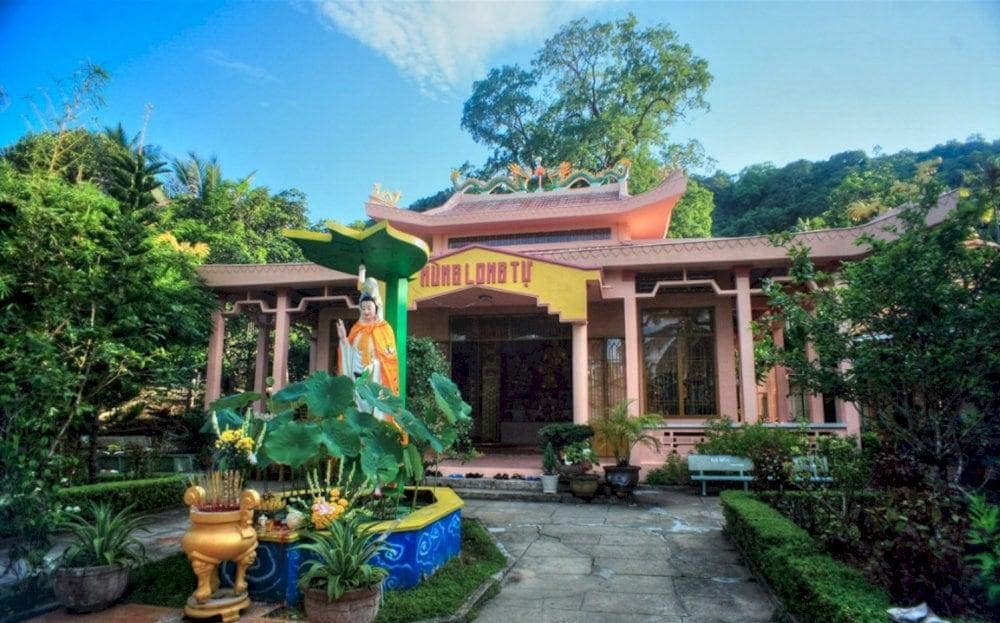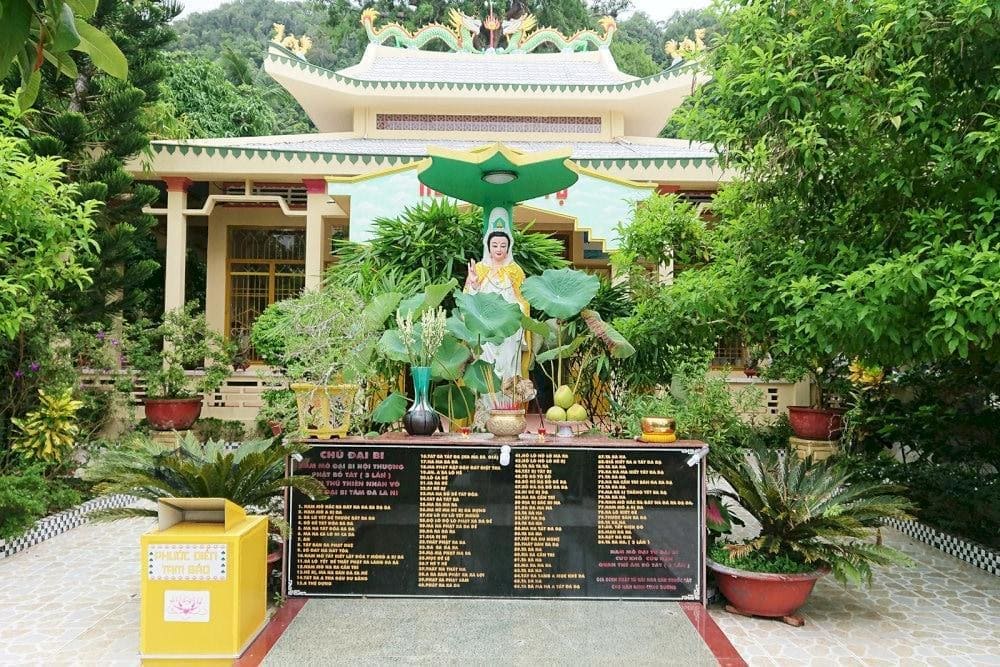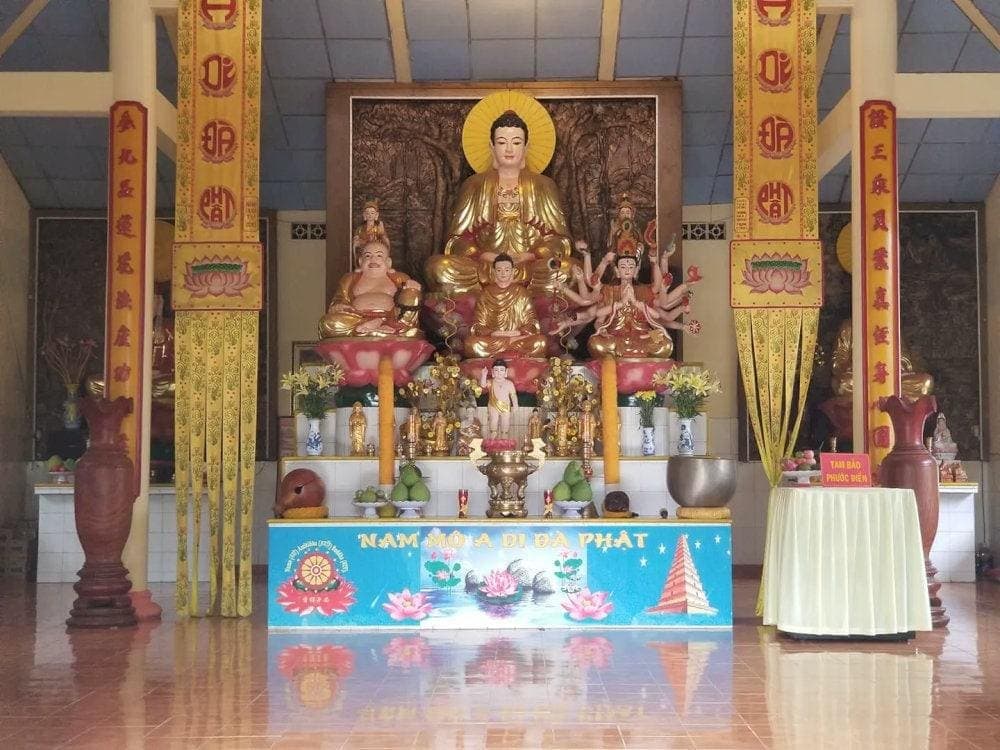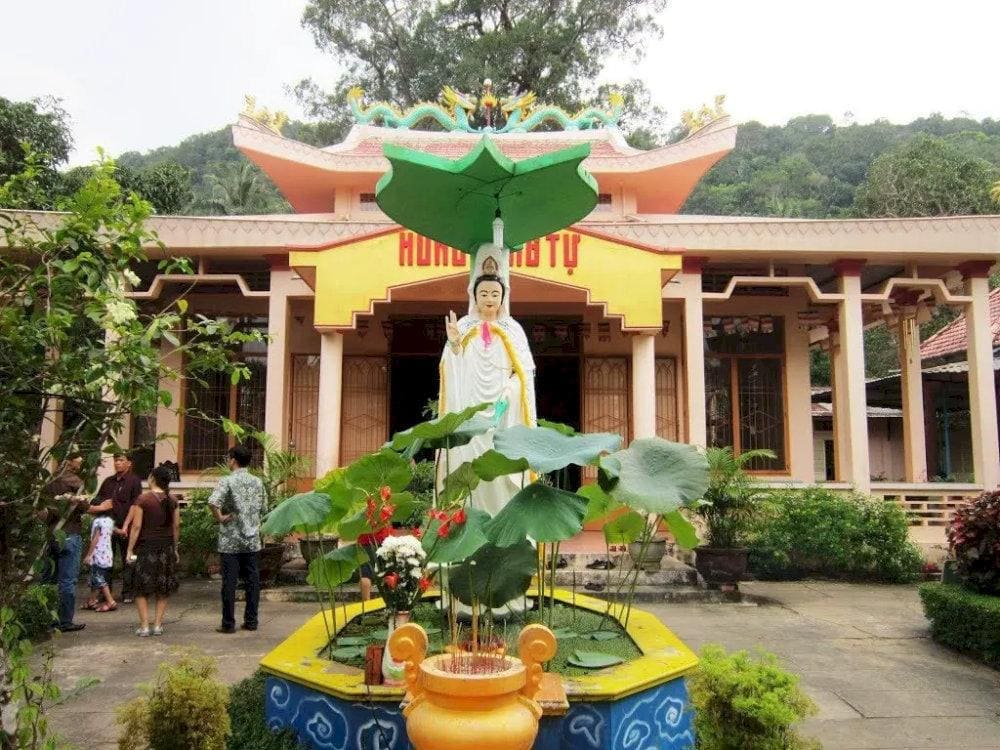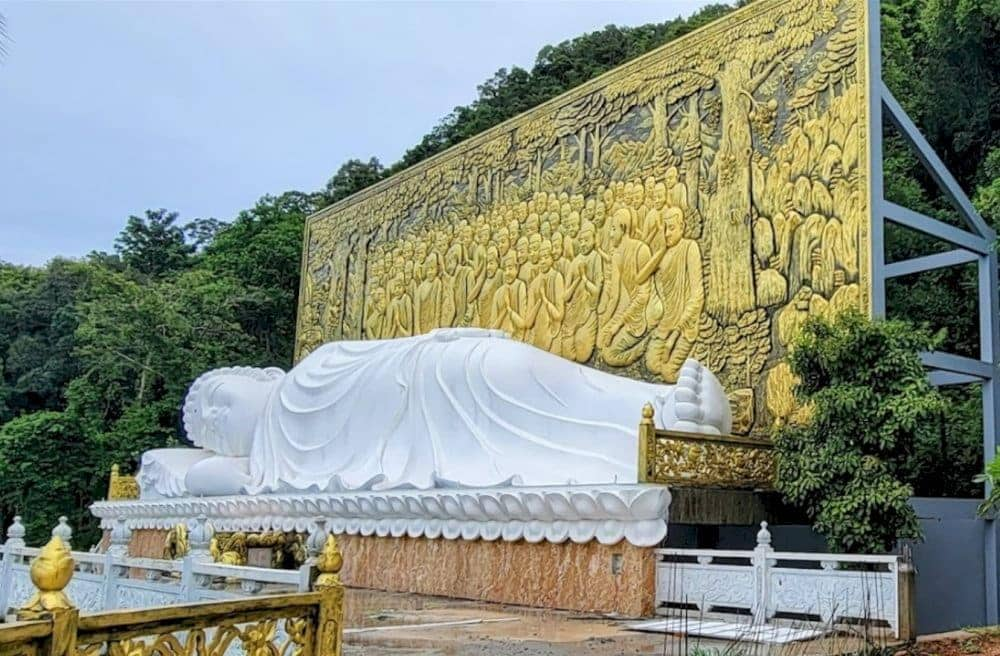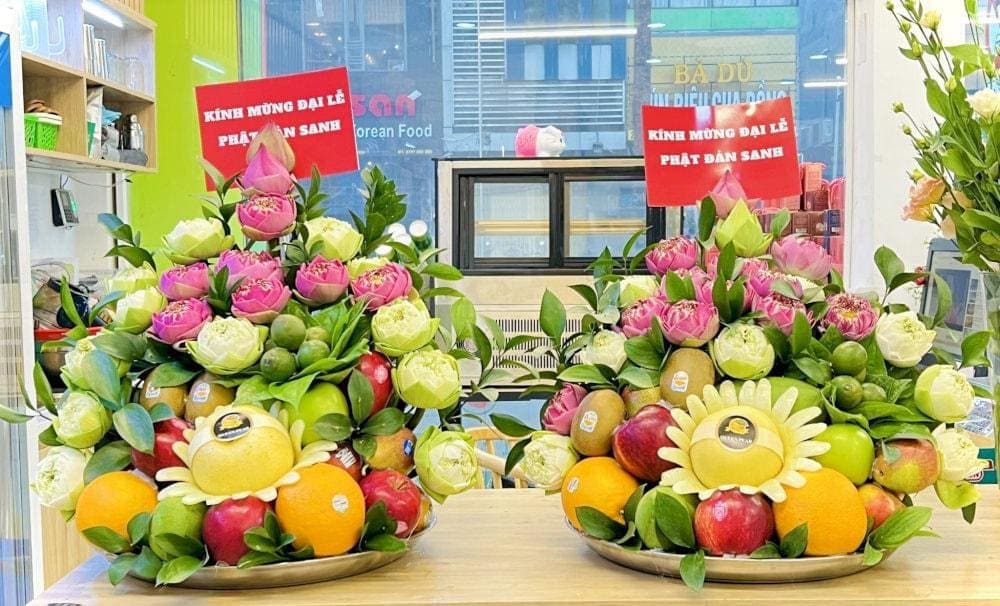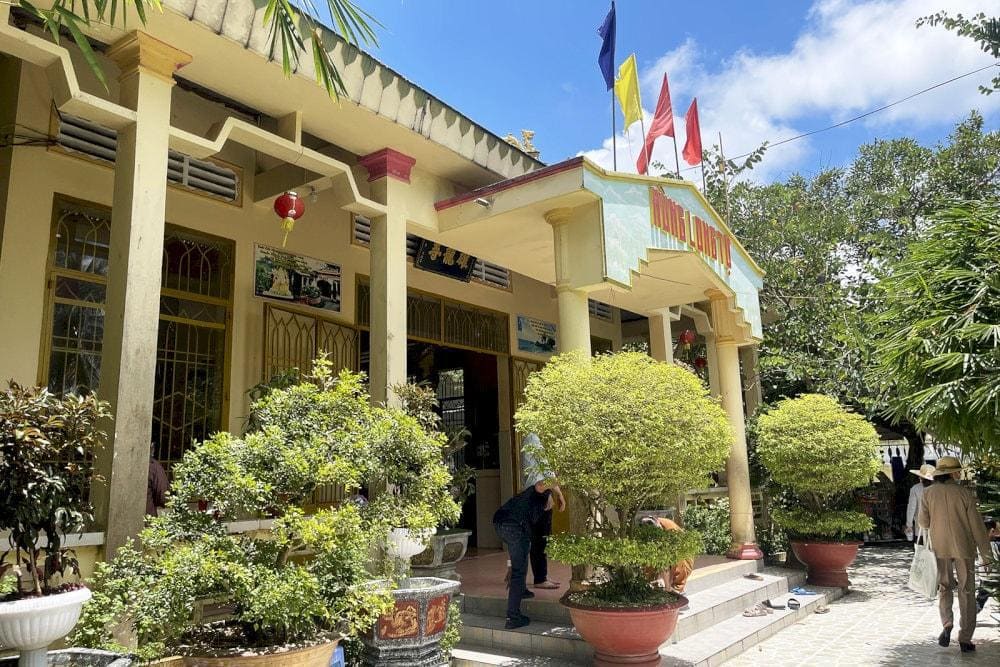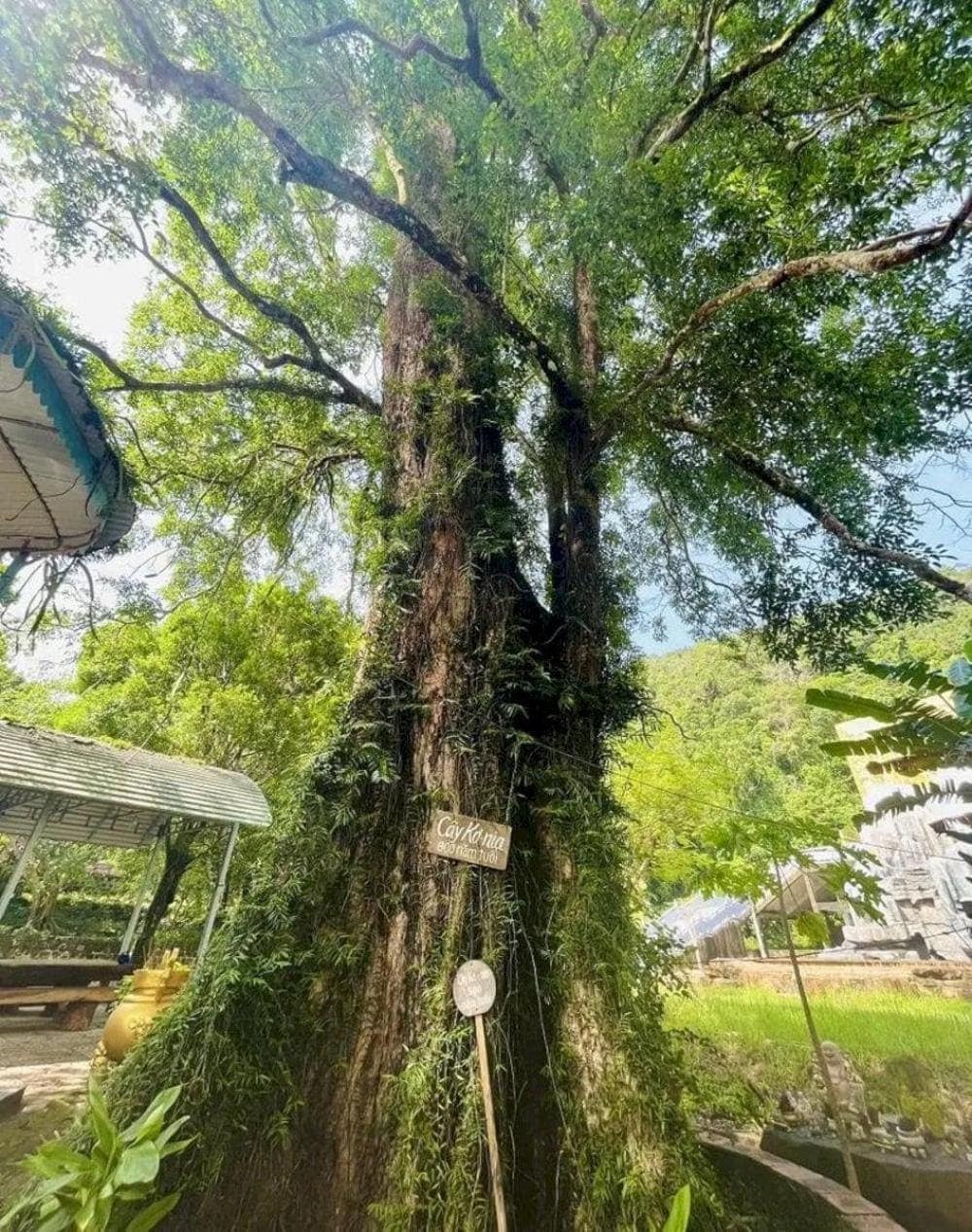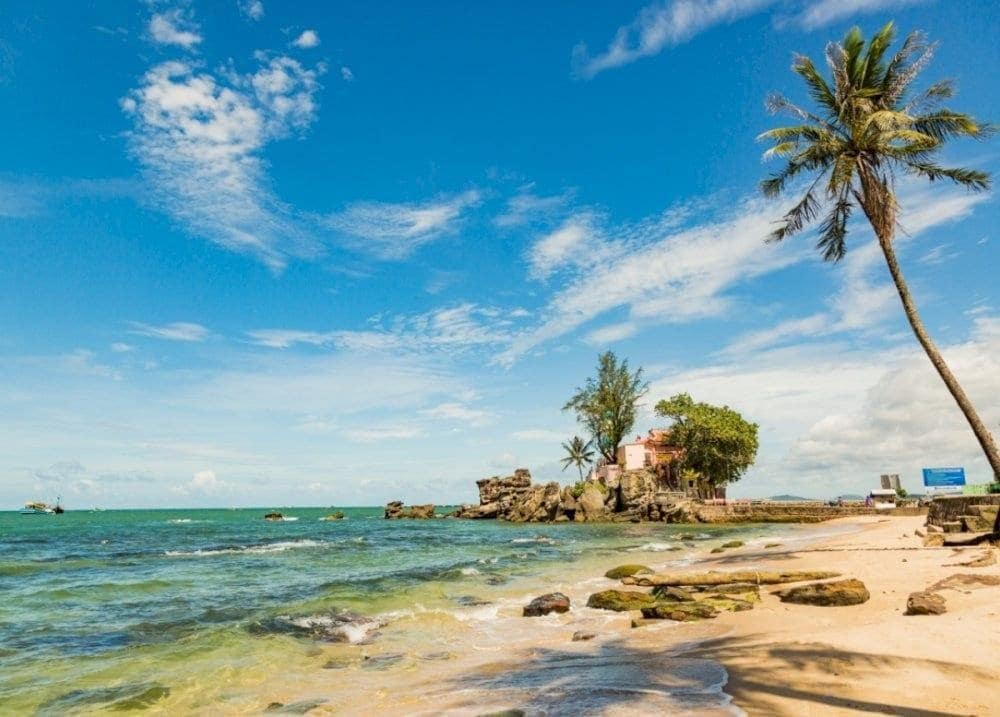1. Overview of Su Muon Pagoda
1.1. Where is Su Muon Pagoda?
Su Muon Pagoda is located in Suoi Da Hamlet, Duong To Commune, Phu Quoc Island, Kien Giang Province . Nestled amidst lush hills and serene natural surroundings, the pagoda offers a peaceful retreat away from the bustling town center.
The pagoda is generally open to visitors from early morning until late afternoon. It is recommended to visit before dusk to fully enjoy the tranquil atmosphere and natural light for photography.
From Duong Dong town, it takes about 5 to 7 kilometers to reach Su Muon Pagoda. The most convenient way to get there is by motorbike or taxi. The journey offers scenic views of the countryside, making it a pleasant ride for those looking to explore the natural beauty of Phu Quoc.
- By motorbike: Head southeast from Duong Dong on Tran Hung Dao Street, then follow signs toward Suoi Da Hamlet.
- By taxi: Taxis are readily available around Duong Dong and can take you directly to the pagoda entrance.



